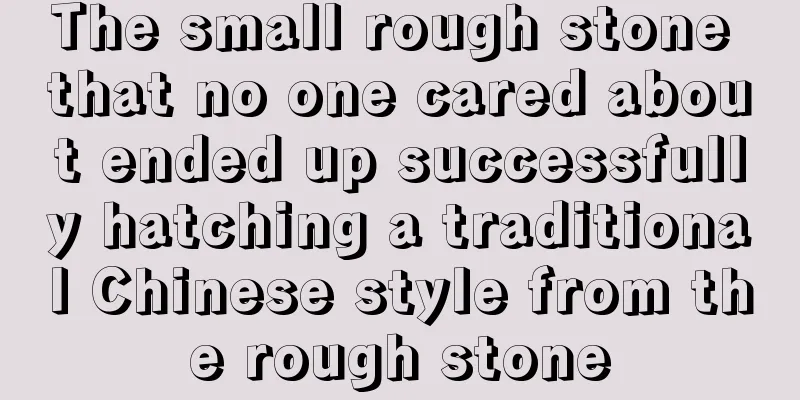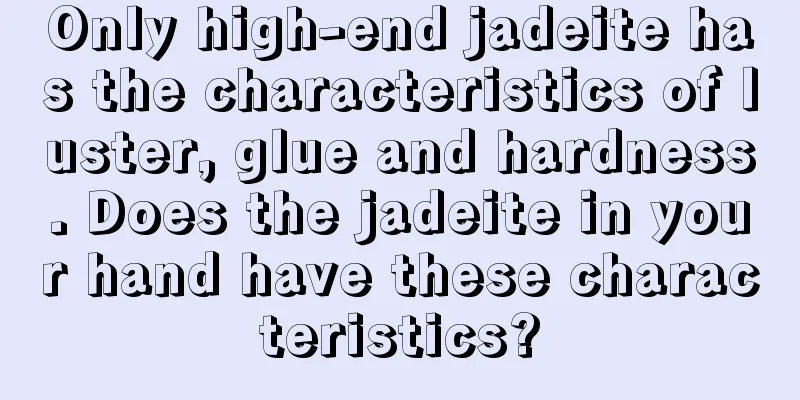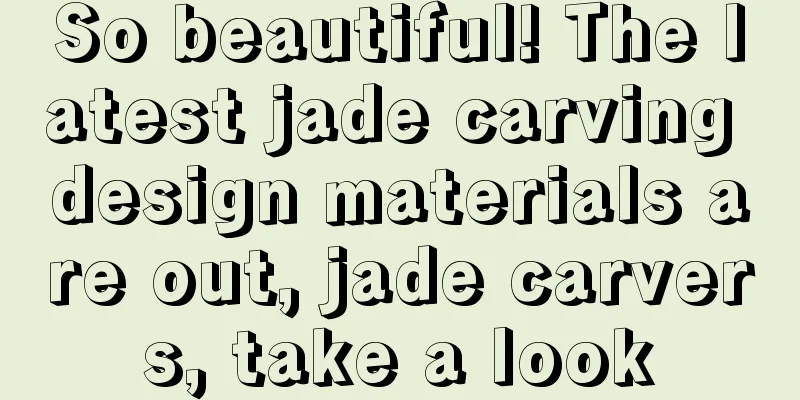How many of these wrong jade common sense do you know?

|
Most people who like jade are willing to learn more about jade in order to buy better jade. At least they must understand some common sense about jade. However, there is a lot of common sense about jadeite circulating on the Internet. Some of them are even known to everyone and have become the criteria for buying jadeite. But can you be sure that the common sense about jadeite that has been passed down by word of mouth and regarded as the truth is necessarily correct? Today Hai Xin will take you to understand those wrong "common sense" about jadeite. The older the jade is, the better? You may think that the older the jade is, the better. It is undeniable that antique jades from a long time do have a certain collection value. For example, jade rings and jade snuff bottles from the Qing Dynasty are all collected by people. But it does not mean that the older the jade is, the better. That is because jade was popular in the Qing Dynasty, and there was no strict mineralogical standard at that time. As a result, people knew very little about jade and had no idea of its quality. Secondly, when it comes to antique jadeite that has been passed down from a long time ago, archaeological experts often only look at the age and not the material, and ignore the quality of the jadeite. As far as the quality of the jadeite is concerned, the quality and color of ancient jadeite is not necessarily very good. Another reason is that these ancient jades have an added value, namely historical and cultural value. The measurement of this value varies from person to person. Empress Dowager Cixi's jade necklace once failed to sell at a large jewelry auction. The newly unearthed jade is more in line with people’s modern aesthetics, and both the carving craftsmanship and inlay styles are excellent. The more complex the jade carving, the better? For those of you who have just started working in the jade industry, have you ever heard of the saying "30% material, 70% workmanship"? This saying can easily lead to great misunderstanding among those who have just entered the industry, and they will think that the more complex the jade carving, the better. In fact, this is not the case. There is also a saying in the jade industry: "No cracks, no carving." Because jade has flaws and cracks, the dirt and cracks must be scraped away to conceal the flaws and highlight the beauty, in order to create an exquisite jade product. High-quality jade often has a delicate and smooth texture with few flaws, so “good jade does not need to be carved” and does not require complicated carving to prove its perfection. Jade with less carving often has extremely high requirements on the quality of the jade. Jade egg-shaped faces, jade pendants, bead necklaces, etc. are all plain jade that does not require any carving. He has very high requirements for the quality of jade, and any obvious flaws will not be made into plain jade.
|
<<: Do you understand the criteria for purchasing jade egg-shaped beads?
>>: How to read the contents of a jade identification certificate?
Recommend
Is your jade "alive" or "dead"?
We all know that animals and plants have life and...
Only when jade is flawless can it be “plain”
The "plain" here refers to jade jewelry...
Are there any tips for selecting green jadeite rough stones? Let’s learn together!
As the price of jade rough materials increases, t...
Jade processing methods, these three main jade carving techniques need to be understood
Man takes care of jade for three years, and jade ...
The beauty of jade: elegance, charm, smartness, dexterity and beauty
Jadeite, as an extension of Chinese jade culture,...
Landscape pendants have been a popular subject for jade carvings since ancient times. Why is this?
The depiction of nature has a long history in the...
The seven most expensive jade necklaces in history, each one is top-notch!
In recent years, jadeite bead necklaces have been...
The simplest way to identify jadeite, useful information sharing
First of all, you need to have a certain understa...
Two jade bracelet cores, the process of carving Thousand-Armed Guanyin, you will be surprised after unpacking!
The quality of this bracelet core is impeccable, ...
The dragon carving is superb, controlling the jadeite!
Dragon, the auspicious totem of all Chinese ethni...
The production and processing process of jadeite, from jadeite raw stone to finished product
Although jade has the highest market value, it is...
"Type, water, color and workmanship" are the basis for selecting jadeite, and the new trend of collection and purchase also needs to consider these four points
Good quality and water can bring out the color of...
Jade bracelet | A wonderful summer item, cool and fun
It's only been a few days since the beginning...
Share the process from cutting jadeite sheets to shipping finished products
Let me show you the process from a piece of cut m...
Peace buckle brings safety, how to choose jade peace buckle
We know that the jade peace locket has a very goo...









